
Lecture No.43
Data Structures
Dr. Sohail Aslam

Recap
Collision Strategies in Hashing
Linear Probing
Quadratic Probing
Linked List chaining

Hashing Animation
Let’s see the hashing animation. We will see linear probing, quadratic probing and
link list chaining in it. This is an example of how do we solve collision.
We have an array shown in four different columns. The size of the array is 100
and the index is from 0 to 99. Each element of the array has two locations so we
can store 200 elements in it. When we have first collision the program will use the
2nd part of the array location. When there is a 2nd collision the data is stored
using the linear probing. At the top right corner we have hash function x and its
definition is “mod 100”. That is when a number is passed to it, it will take mod with
100 and return the result which is used as index of the array.
In this example we are using numbers only and not dealing with the characters.
We also have a statistical table on the right side. This program will generate 100
random numbers and using the hash function it will store these in the array. The
numbers will be stored in the array at different locations. In the bottom left we
have hashing algorithms. We have chosen the linear probing. Now the program
will try to solve this problem using the linear probing. Press the run button to start
it. It is selecting the numbers randomly, dividing it by 100 and the remainder is the
hash value which is used as array index.
Here we have number 506. It is divided by 100 and the remainder is 6. It means
that this number will be stored at the sixth array location. Similarly we have a
number 206, now its remainder is also 6. As location 6 is already occupied so we
will store 206 at the 2nd part of the location 6. Now we have the number 806. Its
remainder is also 6. As both the parts of location 6 are occupied. Using the linear
probing we will store it in the next array location i.e. 7. If we have another number
having the remainder as 6, we will store it at the 2nd part of location 7. If we have
number 807, its remainder is 7. The location 7 is already occupied due to the
linear probing. Therefore the number 807 will be stored using the linear probing in
the location 8.

Hashing Animation
Let’s change the collision resolution algorithm to quadratic probing. Run the
animation again. Now we have array size as 75 and the array is shown in
three columns. Each location of the array can store two numbers. In quadratic
probing we add square of one first i.e. 1 and then the square of two and so on
in case of collisions. Here we have used a different hash function. We will take
the mod with 75. When the both parts of the array location is filled we will use
the quadratic probing to store the next numbers. Analyze the numbers and
see where the collisions have happened.
Lets see the animation using the linked list chaining. Now the hash function
uses 50 to take mod with the numbers. So far pointers are not shown. When
both parts of the location are filled, we will see the link list appearing. We have
four numbers having remainder 0. The two numbers will be stored in the array
and the next two will be stored using the link list which is attached at the 0
location.
We are not covering the hashing topic in much depth here as it is done in
algorithms and analysis of algorithms domain. This domain is not part of this
course. For the time being, we will see the usage of hashing. For certain
situations, table ADT can be used, which internally would be using hashing.

Applications of Hashing
Compilers use hash tables to keep track of
declared variables (symbol table).
A hash table can be used for on-line
spelling checkers — if misspelling detection
(rather than correction) is important, an
entire dictionary can be hashed and words
checked in constant time.





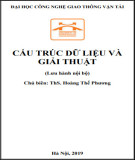
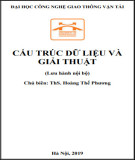
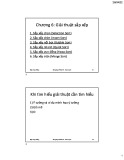
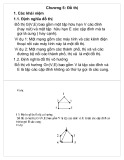
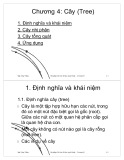
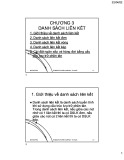








![Bài giảng Phân tích thiết kế hệ thống [Mới nhất]](https://cdn.tailieu.vn/images/document/thumbnail/2025/20250811/vijiraiya/135x160/642_bai-giang-phan-tich-thiet-ke-he-thong.jpg)






